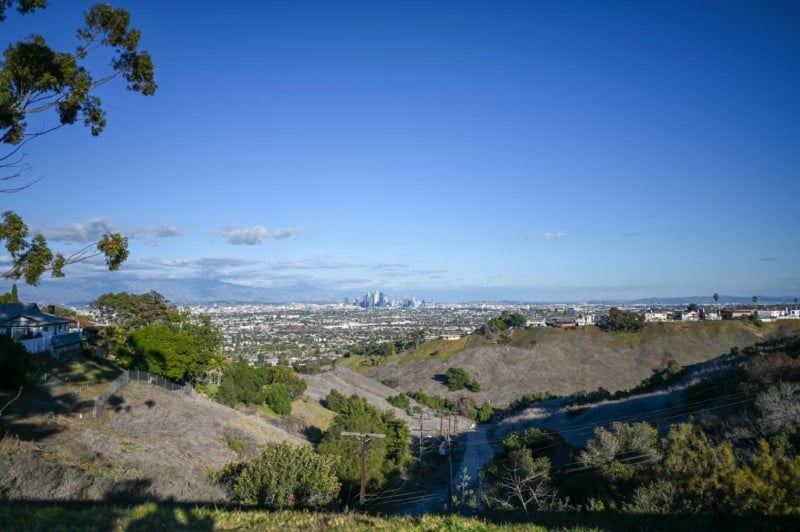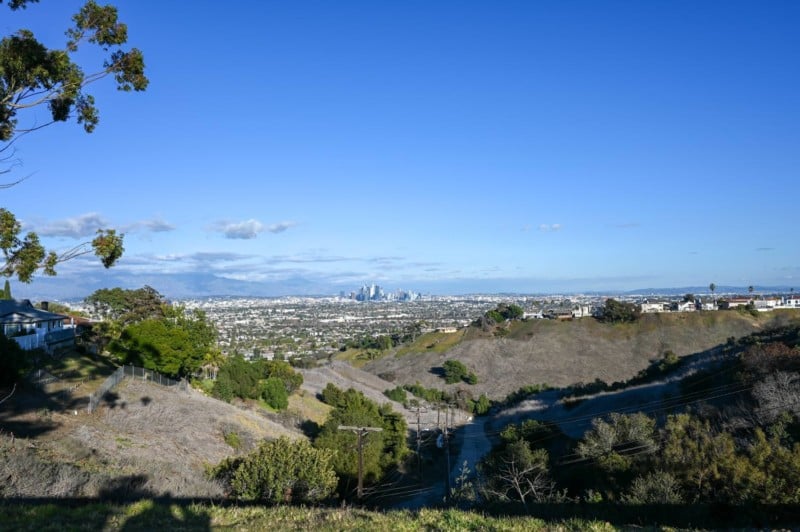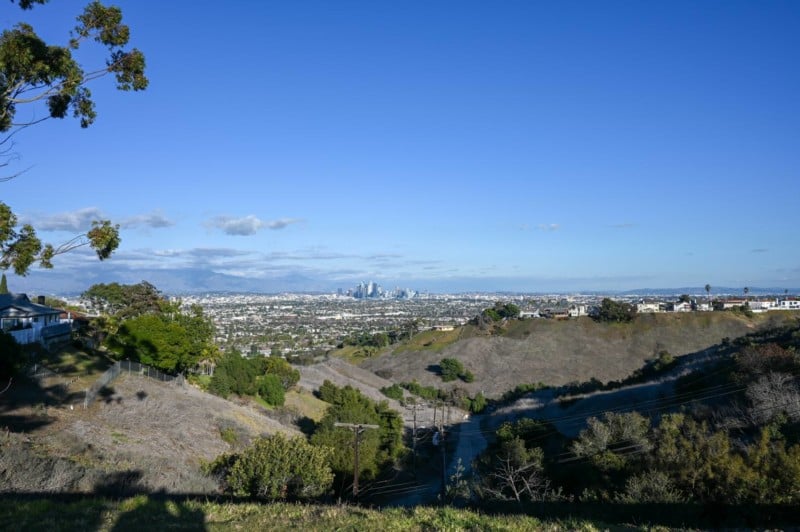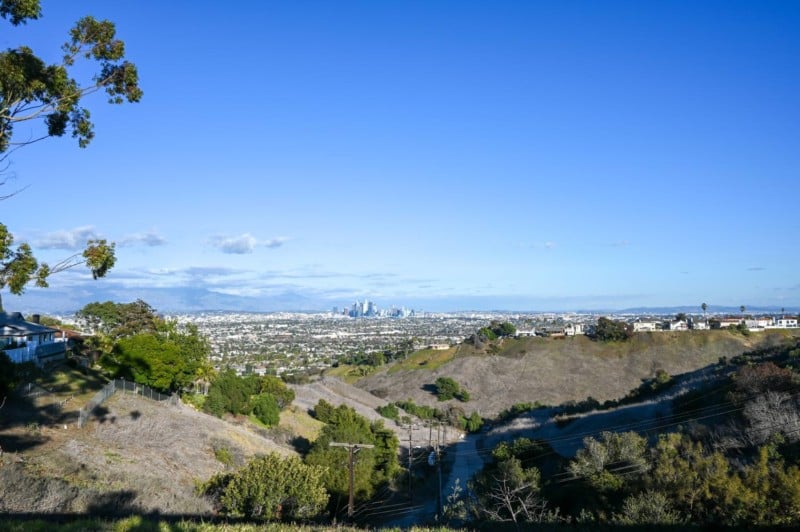Nikon Z 28mm f/2.8 Lens Review: Tiny, Mighty, And Cheap
![]()
There has been a lot of chatter and excitement surrounding the Nikon Z 28mm f/2.8 lens when it was announced as a special pairing (along with a special version) with the Z fc camera. As one of the smallest and lightest lenses released for the Z mirrorless system that comes paired with one of the shorter focus distances, the $297 “pocket” lens packs a lot of punch in a tiny and affordable package.
The tiny full-frame wide-angle lens (translates to about 42mm on a crop sensor) is mostly made of plastic and quite a bit lighter than Nikon’s higher-end glass. It weighs a scant 155 grams (5.5 ounces) which makes it quite easy to carry around as an everyday lens. The close focus distance (7.5 inches) and claimed weather sealing only add to this.
The lens is technically positioned in between the 24mm f/1.8 S and the 35mm f/1.8 S lenses but lacks the “S” designation of its siblings. Given the interesting focal length, it might shine better on a crop sensor body. On a full-frame system, this lens gives users a 75-degree field of view but on a DX system like the Z fc or Z50 it gives a little closer to the “human eye” perspective. For the purpose of this review, I tested it on multiple full-frame systems, however, I believe the 28mm lens was meant to do greater things if it were attached to a DX system like the Z fc or Z50 (neither of which I had access to, unfortunately).
Build Quality and Design
![]()
The compact lens is quite similar in design to Nikon’s 40mm f/2 lens with very similar dimensions and external appearance. The single control ring on the lens controls the focus ring by default, but it can be customized to adjust the aperture or other features depending on the camera. Also, like the 40mm f/2 lens, the 28mm also excluded the Auto/Manual (AF/M) focus switch and familiar lens hoods typically accompanying most Nikon lenses.
Inside, the lens is rather similar to its 40mm sibling because it too is missing internal image stabilization. Not having it is by no means a dealbreaker but having stabilization for low light moments would have been nice, and lacking any stabilization at all on Nikon’s more affordable bodies like the Z50 can be rather debilitating, even in good lighting.
Update 1/17/21: The original story erroneously claimed all Nikon Z cameras had IBIS, when this was not the case. We apologize for the error.
![]()
![]()
When compared to the S-line of lenses, the 28mm f/2.8 frame and lens mount is made mostly of plastic making it feel a little more fragile. I suppose the benefit of the plastic body means it is much lighter, and of course, keeps the price much lower. And despite it being made of plastic, the lens does still feel surprisingly sturdy and well-balanced.
Another downside of it not being an S-lens is it is missing the additional “fancy” coatings, and while it is mostly unnoticeable if you look for it and do some heavy comparisons with images shot in harsh backlit situations (like shooting into the sun) the differences between the high and low-end Nikon glass will start to become apparent.
![]()
![]()
![]()
Image Quality and Performance
While I found the lens to be a bit of an “in-between” focal length on my full-frame bodies (I tested it with the Nikon Z6, Z6 II, and Z9), the images were quite clean, sharp, and the autofocus was incredibly quick (and quiet) when tracking moving objects, achieving accurate focus in under a second in pretty much every scenario I could throw at it.
The control ring on the lens, being totally customizable, is of a “clickless” design (which is beneficial for video shooters) and there is no haptic feedback available for minimum or maximum focus/aperture ranges. However, when focusing manually, there is a little bit of focus breathing when pulling from its maximum to minimum focus distances. The magnification, at least in my testing, was barely even noticeable had I not been shooting with a tripod on static targets, and even then it is so minimal that it should not be an issue for casual stills or video work.
![]()
When stepped down to f/2.8 through f/4, there is some very minor aberration and vignetting in the images that would be mostly unnoticeable were you not looking for it specifically. Once the aperture is set to above f/4 there are next to no issues in clarity, sharpness, or aberration for the rest of its range. Like most of the lenses of this nature, I found the sharpest focal sweet spot to be around f/5.6 to f/8 for most scenarios. With such a wide field of view, when shooting objects close up, it is able to create a strong separation between the subject and the background even at higher f-stops, meaning creatives do not need to feel stuck in the f/2.8 zone for their images.
![]()
As for the bokeh, while the separation is smooth and easy to manage, the actual bokeh pattern seemed to be the blandest of the Nikon Z lenses I have been able to use so far. It is not bad by any means, it just did not stand out in any way.
It is worth noting as well that when shooting on the Z mirrorless system an option is available for “Vignette Control.” If this is enabled, even just on “normal” the minimal amount of vignetting present becomes almost invisible, except for when shooting wide open at f/2.8. At that aperture, the extreme corners will still have visible vignetting in the raw files. (All of this is easily adjusted in post and/or by applying the lens profile to the images)





Below are a set of sample images taken with Nikon Z 28mm f/2.8 lens:
![]()
![]()
![]()
![]()
![]()
![]()
![]()
![]()
![]()
![]()
Tiny, Mighty, And Cheap
While the Z-mount 28mm f/2.8 lens from Nikon may not deliver the same top-notch quality as the S-line of lenses, it does deliver a lot at a significantly lower price than those same S-line lenses command. It performs consistently with minimal aberration and has a top-notch and quiet autofocus motor making it additionally beneficial to videographers. Also, did I mention it’s cheap?
The most important feature of this lens is its small size and weight, especially when compared with its cost. While the performance was not mind-blowing on an FX system, I get the impression when connected to a DX camera, any of the issues I had with aberration or vignetting around the corners would be negligible.
Either way you look at this lens, it is discreet and sturdy enough to travel with photographers as part of their “everyday” kit.
![]()
Are There Alternatives?
Nikon already has several S-line alternatives for this lens that sit on either side of its focal range, but they are significantly higher priced. This includes the $997 24mm f/1.8 S and the $847 35mm f/1.8 S. While both are “close” in focal range and are larger and heavier. It should also be noted that they are far less discreet than the 28mm f/2.8 for something like street photography.
Looking beyond Nikon, the $429 Viltrox AF 24mm f/1.8 is pretty similar, faster, and a little closer to the price of the Nikon Z 28mm f/2.8. I can’t speak to the quality of the photos it produces, however.
Should You Buy It?
Yes, if you are looking for a lens to fill in the gaps between the other focal lengths or simply want a very affordable walkabout lens for travel and street photography. The $297 28mm f/2.8 lens is worth the low cost of entry.